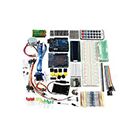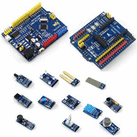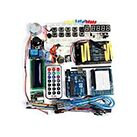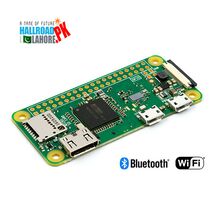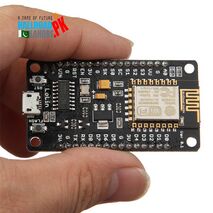Please sign in so that we can notify you about a reply
Here's a handy Arduino Data Logger shield we've had a lot of people looking for a dedicated and well-designed Data Logger shield. Adafruit worked hard to engineer an inexpensive but well-rounded design. Not only is it easy to assemble and customize, but it also comes with great documentation and libraries.You can get going quickly - saving data to files on any FAT16 or FAT32 formatted SD card, to be read by any plotting, spreadsheet or analysis program. Adafruit even have a tutorial on how to use two free software programs to plot your data
The included Real-Time Clock timestamps all your data with the current time so that you know precisely what happened when!
Please note that this item does not come with an Arduino (you'll need one to use with the shield), battery or an SD card The shield now comes with all the components soldered on and tested but does not have headers installed. You'll need some basic soldering skills to put it together, but even if you don't have much experience you can get it done in under 15 minutes.
This is Adafruit Data Logger Shield WITHOUT SD Card including RTC.
Features:
SD card interface works with FAT16 or FAT32 formatted cards. Built-in 3.3v level shifter circuitry lets you read or write super fast and prevents damage to your SD card
Real-time clock (RTC) keeps the time going even when the Arduino is unplugged. The coin cell battery backup lasts for years Included libraries and example code for both SD and RTC mean you can get going quickly
Prototyping area for soldering connectors, circuitry or sensors. Two configurable indicator LEDs
Onboard3.3v regulator is both a reliable reference voltage and also reliably runs SD cards that require a lot of power to run
Uses the “R3 layout” I2C and ICSP/SPI ports so it is compatible with a wide variety of Arduinos and Arduino-compatibles
With this new version you can use it with:
Arduino UNO or ATmega328 compatible – 4 analog channels at 10-bit resolution, 6 if RTC is not used
Arduino Leonardo or ATmega32u4 compatible – 12 analog channels at 10 bit resolution
Arduino Mega or ATmega2560 compatible – 16 analog inputs (10-bit)
Arduino Zero or ATSAMD21 compatible – 6 analog inputs (12-bit)
Arduino Due compatible – 12 analog inputs (12-bit)
Technical Details:
Dimensions (assembled): 70mm x 53mm x 17mm (2.7in x 2in x 0.65in)
SD Card protrudes by 10mm (0.4in) when inserted
Weight: 22g/0.8oz
This board/chip uses I2C 7-bit address 0x68.


